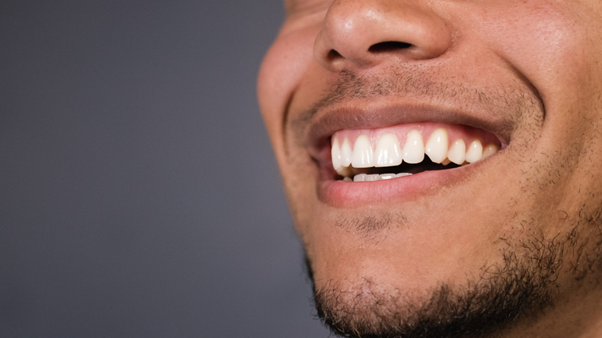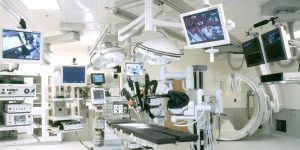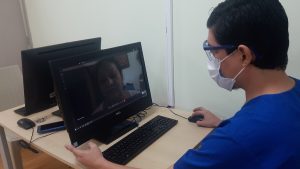Face the Facts: The Complete Guide to the Human Facial Structure

It’s time to meet face-to-face with your face. The average person can recognize 5,000 faces, including ones for people they have never met.
One reason why is the facial structure. It is relatively consistent, with most people having similar or identical structures.
But what forms the face? What are the most important bones and muscles on the face? What are some artistic concepts that affect facial anatomy?
Answer these questions and you can study someone’s face in extreme detail. Here is your quick guide.
Bones
When people think about facial anatomy, they often think about the bones of the skull. The viscerocranium bones are the skull bones that affect the face. The neurocranium bones protect the brain and extend toward the back of the head.
When you are learning about the face, you need to focus on the viscerocranium. Though the bones may seem discontinuous, they connect in many different ways.
Upper Face
The frontal bone extends from the midline of the skull down to the top of the eye sockets. When you are touching your forehead, you are touching your frontal bone.
The lacrimal bones are small bones that lie inside the eye sockets. They add definition to the face and they help tears and fluid from the eyes drain out of the face.
Middle Face
Your nasal bone extends through most of your nose. The tip of your nose is made of soft cartilage, not hard bone. The nasal bone is small, but it is durable, even if you hit it against something.
The maxilla covers most of the middle face and upper jaw. It is two bones fused together beneath the nose. Your maxilla helps you talk, chew on food, and smile.
Your temporal bones are at the sides and bottom of your skull. Your temples and your ears lie over your temporal bones. Major blood vessels and nerves that connect to the brain traverse the bones.
The zygomatic bones lie on the far sides of the face. If you have “high cheekbones,” you have prominent zygomatic bones, but everyone has two of them. They support the eyes, forming the floors of your eye sockets.
Lower Face
The mandible is the bone that forms the lower jaw. It is the bone you move when you chew and speak. You cannot move the maxilla, as it forms the sides of your nose and your upper lip.
Many people think their teeth are bones. They contain calcium and look similar to bones, but bones are living tissue while teeth are not. Teeth contain dentin and enamel, which bones do not contain.
Muscles
There are more muscles than bones in the face. Large and small muscles alike affect how you look and how the face functions.
Upper Face
The frontalis muscles cover the forehead down to the eyes. When you scrunch your forehead or move your eyebrows, you are using your frontalis muscles.
The orbicularis oculi muscles surround your eyes. When you close your eyelids or open them wide, you are contracting these muscles. They also help protect the eyes during collisions.
Middle and Lower Face
The procerus muscle lies at the bridge of your nose. If you scrunch your nose, you will contract this muscle.
Your nose does not have any muscle due to its cartilage and thin bones. Your ears also do not have muscles. Your ear lobes are made of cartilage, and you use small bones in your ears to hear, not muscles.
There are numerous muscles that lie inside your cheeks, lips, and lower face. Each of them has its own function, and they all work together so you can emote and breathe.
The platysma muscle is one of the most important ones in your lower face. It helps you move the corners of your mouth. But it also extends down into the throat, protecting the arteries and nerves there.
Proportions
The proportions of the face vary from person to person. The aging process affects them, as do hormones and dietary habits. All bones and muscles in the face impact the proportions, but there are concepts to consider besides anatomy.
Facial harmony is one concept that artists and doctors use to describe facial proportions. No part of the face exists on its own, even seemingly independent parts like the nose or eyes.
If you change one feature of your face, you affect your entire face and may need to change other features. You should learn more about cosmetic surgery before you decide to have a procedure.
Symmetry is another critical concept. It occurs when the features on two sides of a line mirror each other, at least in broad strokes.
No one’s face is symmetrical. One cheekbone may be higher than the other, or one corner of the mouth may droop lower. Differences may be hard to detect with the naked eye, but you can notice them if you ever mirror one half of someone’s face.
Facial harmony and symmetry impact how people perceive beauty. They also impact how facial recognition software works. Software may not pick up on a face that is too symmetrical.
The Basics of the Facial Structure
The facial structure is more complicated than it seems. The bones in your skull keep your brain, eyes, and arteries safe.
You have even more muscles all throughout your face. Whenever you move a part of your face, you are moving several muscles at once.
Facial harmony refers to how all of your features relate to each other. The lack of symmetry in your face calls attention to it and helps your appearance seem distinct.
Once you know your face, you can know the rest of your body. Read more anatomy guides by following our coverage.







